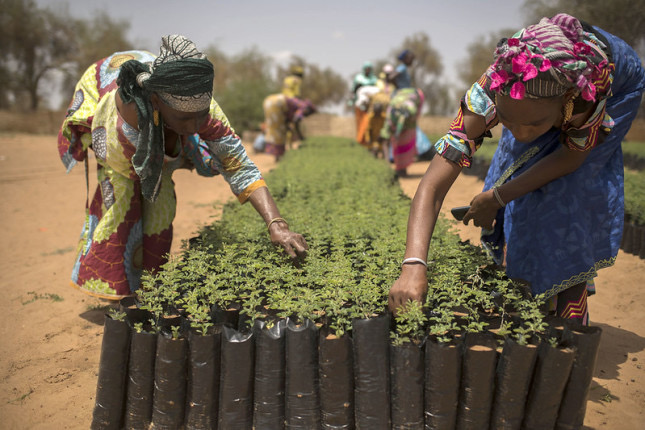From the rhythmic beats of drums to the intricate patterns of traditional attire, Africa’s artistic landscape is as varied as its people. A rich fusion of cultural diversity unfolds in the pulsating heart of Africa, where the harmonies of civilization blend with the rhythms of tradition. The rich heritage that defines the African continent is celebrated in this article, which travels through the expressive mediums of music, literature, film, and art. In this piece, cultural procedures that define the historical context of African creativity, spotlighting the artists who encapsulate its essence while recognising the critical role performed in maintaining traditions for future generations, are explored.
Literature as a Diversity Mirror
Chimamanda Ngozi Adichie, a renowned Nigerian author, once stated, “In the written and spoken word, African literature is a living testament to the complexity and richness of the human experience, encapsulating the triumphs and tribulations of a continent.” Oral and written African literature is a potent tool for conveying the diversity of the continent’s cultures. African writers employ storytelling to tackle historical issues and envisage bright futures while capturing the spirit of their communities in anything from old oral epics to modern novels.
“Things Fall Apart” by Chinua Achebe is a literary classic that examines how colonisation affected traditional African civilizations. Achebe presents a complex portrait of cultural collision and the tenacity of indigenous customs through the eyes of the Igbo people in Nigeria. Together with the writings of authors such as Ngũgĩ wa Thiong’o and Chimamanda Ngozi Adichie, this book adds to the rich literary fabric that depicts the diversity of African experiences.
Additionally, the oral tradition, which has its origins in storytelling, remains strong. Through the art of spoken word, Ghanaian traditional storytellers have been able to transmit histories, folklore, and moral precepts. This oral tradition ensures that Africa’s stories are alive and relevant by both adapting to modern concerns and preserving the past.
Honouring Cultural Legacy with Visual Expression (Art)
According to a British-Nigerian modern artist, Yinka Shonibare, “Art is the mirror reflecting the diverse landscapes of culture; in Africa, it reflects not just the beauty but the resilience and continuity of traditions.” In Africa, art is more than just a visual representation; it is the dynamic, breathing embodiment of long-standing customs. Every brushstroke on a painting or sculpture, from the prehistoric rock art of the San people of Southern Africa to the modern creations of celebrated artists like El Anatsui in West Africa, conveys a narrative.
African art is noteworthy for its strong spiritual undertones. Numerous traditional artistic mediums are used as channels for divine communication. For example, the Yoruba people of Nigeria have elaborated wooden sculptures that are not only beautiful to look at but also have deep spiritual meaning. These statues, which represent the knowledge and counsel of the ancestors, serve as portals to the spirit realm.
African artists of today also find inspiration in their cultural heritage as they tackle the complicated contours of contemporary life. Ghanaian architect El Anatsui is well-known for his expansive pieces created from metal and bottle caps, among other waste materials. His art is an illustration of the linkage of African civilizations in addition to addressing environmental issues.
African Music: Cultural Diversity in Harmony
It was Beninese singer-songwriter Angelique Kidjo who said, “Music, like a river, flows through the diverse terrains of Africa, conveying the echoes of ancient rhythms and the harmonies of a modern, unified world.” Music can communicate across cultural boundaries, and it has been essential to the preservation of Africa’s rich cultural diversity. All the regions of Africa have their own distinctive musical personalities, from the melodious tones of the Mbira in Southern Africa to the rhythmic banging of West African drum ensembles.
African music is known for its use of the term polyrhythms—two or more rhythms played simultaneously at the same tempo, defined as several separate rhythms coexisting peacefully. Every rhythm adds to the alignment’s overall beauty, showcasing the cultural diversity of the continent through its melodic complexity. Nigerian musician Fela Kuti popularised the Afrobeat genre, which is a perfect example of blending traditional rhythms with contemporary elements and has worldwide appeal.
Cultural heritage preservation has continued to depend on traditional instruments like the talking drum in West and Central Africa and the kora in West Africa. These instruments are pertinent to rituals, rites, and storytelling; they are not only tools for amusement and enjoyment; they convey the fundamentals of African identity from generation to generation. No wonder Salif Keita, a musician from Mali and supporter of cultural preservation, opined, “Preserving cultural heritage and traditions is not a relic of the past; it is a beacon guiding us through the challenges of the present, ensuring that the essence of Africa’s cultural heritage endures for generations to come.”
Cinematic Storylines: Mirroring the Continent’s Sophistication
African cinema has made a name for itself in recent years. Filmmakers from all over the continent are utilising the medium to present tales that dispel misconceptions, highlight cultural diversity, and present a complex picture of life in Africa. “Cinema in Africa is not merely a visual spectacle; it is a storyteller weaving narratives that transcend borders, challenging perceptions, and fostering a deeper understanding of the African experience.” Haile Gerima, an Ethiopian filmmaker.
Nollywood, Nigeria’s thriving film industry, is evidence of Africa’s increasing impact on the global film industry. In addition to being entertaining, movies like “Anikulapo,” “The Wedding Party,” and “Lionheart” offer an insight into Nigeria’s vibrant cultural environment. International recognition has also been bestowed upon South Africa’s film industry, with films such as “Tsotsi” taking home the Academy Award for Best Foreign Language Film.
African filmmakers are utilising their skills to scrutinise important societal issues in addition to pursuing financial success. “Timbuktu,” directed by Abderrahmane Sissako, addresses the effects of radicalism on a community of Malians. This power-packed movie illustrates how African cinema can portray global stories while maintaining a unique cultural identity, as do films like “Capernaum” from Lebanon and “Félicité” from Senegal.
Spotlight on Artists Shaping the Cultural Landscape of Africa
In honouring the artistic expression and cultural diversity of Africa, special attention must be given to the artists who shape the vibrant cultural landmarks of the continent. Not only have contemporary performers like Nigeria’s Burna Boy and Wizkid, Benin’s Angelique Kidjo, and Mali’s Salif Keita received widespread recognition, but they also took pride in incorporating their home countries’ sounds and rhythms into their music.
Visual artists from throughout the world, such as the Ivory Coast’s Ouattara Watts, South Africa’s Esther Mahlangu, and Nigeria’s Yinka Shonibare, offer a distinct viewpoint on the international art landscape. Their creations subvert stereotypes and highlight the diversity of African creative traditions.
Writers who use their words to tackle complicated social and cultural themes, like Wole Soyinka, Ngũgĩ wa Thiong’o, and Chimamanda Ngozi Adichie, continue to shape literary landscapes. Their contributions go beyond literature; they have an impact on discussions about identity, colonialism, and post-colonial realities around the world.
Film filmmakers such as the Ethiopian Haile Gerima, the Senegalese Ousmane Sembène, and the Lebanese Nadine Labaki have made a lasting impression. Their movies challenge preconceptions and promote intercultural understanding, acting as potent instruments for cultural diplomacy in addition to being enjoyable.
Preserving African Traditions on a Global Stage
In light of the continent’s fast globalization, Africantraditional customs and cultural heritage must be preserved. The preservation of ancient customs is threatened by modernization, urbanization, and outside influences. However, there are concerted efforts by artists and cultural lovers to preserve and advance Africa’s various cultural heritages.
Exhibitions, festivals, and cultural events provide venues for presenting traditional crafts and artwork. Events that bring together musicians, artists, and cultural lovers to commemorate and preserve Africa’s unique legacy include the Cape Town International Jazz Festival in South Africa, the Durbar Festival in Nigeria, and the Festival au Désert in Mali.
The preservation of both tangible and intangible cultural assets is greatly aided by museums and other cultural organizations. A forum for discussion between traditional and contemporary manifestations of African art is provided by the Zeitz Museum of Contemporary Art Africa in Cape Town and the National Museum of African Art in Washington, D.C.
Piloting into the Future: Obstacles and Opportunities
While celebrating Africa’s cultural diversity and artistic expression, it is important to understand the obstacles that artists and cultural practitioners encounter. Economic disparities, political instability, and limited access to resources pose obstacles to the flourishing of the arts in many African nations. Additionally, globalisation brings both opportunities and risks for cross-cultural exchange.
Despite these obstacles, there are enormous chances for collaboration, innovation, and empowerment. The internet age has created new opportunities for artists to share their work globally, reaching audiences beyond regional boundaries. Social networking, streaming services, and online galleries enable artists to present their work and connect with a broad audience.
Additionally, some projects focused on education and mentorship are critical to developing the next generation of African artists. Investing in arts education, cultural exchange programmes, and building long-term platforms for artists can all help to keep Africa’s artistic environment vibrant.
The diversity of African cultures and artistic expressions confirms the firmness and inventiveness of the continent. Africa’s cultural legacy is based on its rich history, but it is ever-evolving, ranging from old spiritual practices to modern inventions influencing global dialogues. Africa communicates with the world through literature, film, music, and art, urging a fuller comprehension of its complexity and showcasing the beauty of its richly varied cultures.


